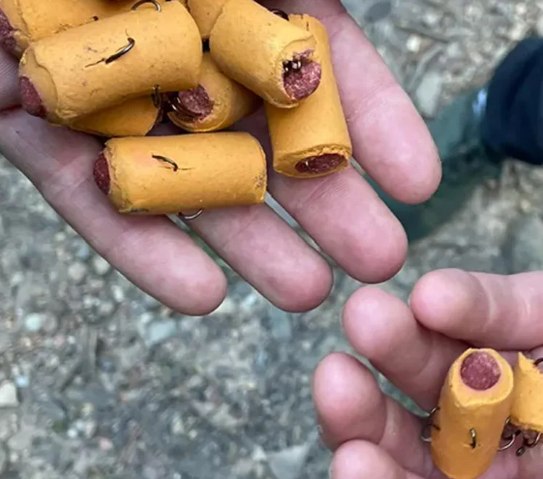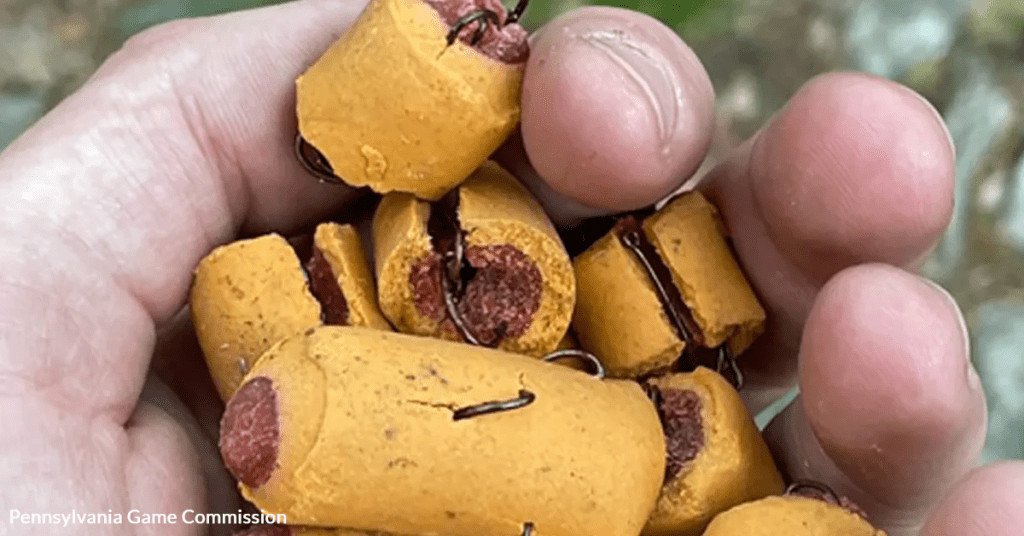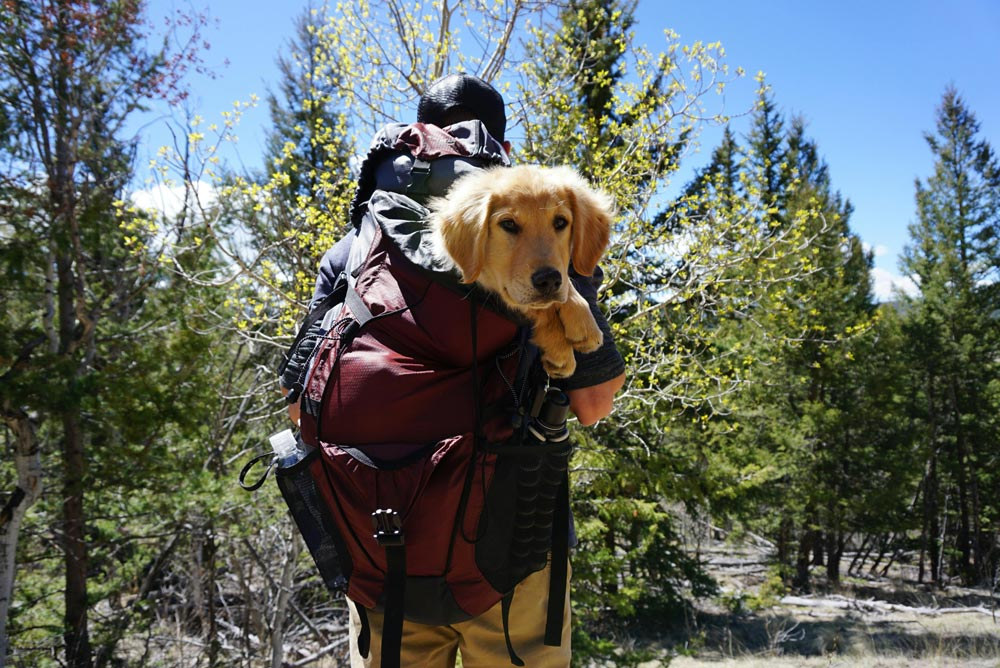Trail of Terror: Hidden Dangers Along the Appalachian Path
It started as a peaceful hike through the autumn woods—sunlight flickering between the trees, dogs trotting happily beside their owners. But what was supposed to be a relaxing weekend stroll turned into a nightmare when a hiker discovered dog treats embedded with fishhooks scattered along the Appalachian Trail in Pennsylvania. The discovery has shaken the hiking and pet-owning community, triggering a full-scale investigation by authorities and raising urgent questions about safety on one of America’s most beloved trails.

A Disturbing Discovery on the Appalachian Trail
The incident occurred on the North Trail Loop leading to the George W. Outerbridge shelter in Washington Township, Lehigh County. A hiker, enjoying a quiet morning walk, noticed what appeared to be ordinary dog treats on the ground. Upon closer inspection, they found fishhooks hidden inside—lethal traps capable of seriously injuring or killing any animal that bit into them.
The hiker immediately contacted the Pennsylvania Game Commission, which quickly launched an investigation and issued an official warning to the public. The Commission’s officers collected the dangerous items and increased patrols in the area. According to southeast office supervisor Dustin Stoner, this case is unlike anything they’ve seen before—“unique, disturbing, and deeply concerning.”
Swift Action and Community Warnings
After the initial discovery, authorities moved fast to alert the public. Warnings were posted at local trailheads, on social media, and throughout hiking forums to ensure no one else—or their pets—fell victim to the hidden traps. The Game Commission also urged hikers to stay on designated paths, keep pets on short leashes, and immediately report anything suspicious.
Video : Hikers react to dangerous dog treats found on Appalachian Trail
Local media outlets amplified the message, and within hours, the story spread far beyond Pennsylvania. The Morning Call, FOX 29, and other regional networks echoed the same chilling reality—someone had deliberately placed these deadly objects in one of the most popular sections of the Appalachian Trail.
Protecting Pets and Wildlife
The Appalachian Trail isn’t just a hiker’s paradise; it’s a sanctuary for countless wildlife species. From curious foxes and deer to roaming bears, animals frequently cross paths with humans here. The fishhook-laced treats, though seemingly small, have catastrophic potential. If ingested, the hooks can pierce throats, intestines, or stomach linings, leading to slow and excruciating deaths.
Domestic dogs are especially vulnerable since they tend to sniff and eat things off the ground. The Game Commission’s public advisory emphasized the importance of staying alert and inspecting anything unusual on the trail. “Even a moment’s distraction could lead to tragedy,” one spokesperson warned.

Authorities on High Alert
Officials from the Pennsylvania Game Commission, along with the National Park Service and local law enforcement, have joined forces to find whoever is responsible. The George W. Outerbridge shelter area, maintained by the Allentown Hiking Club, is now under close surveillance. Investigators are analyzing the materials and searching for any clues—fingerprints, camera footage, or witness accounts—that could lead them to the culprit.
“This act isn’t just malicious—it’s criminal,” Stoner stated firmly. “If caught, those responsible will face severe charges for animal cruelty and endangering public safety.”
The Commission also established a hotline—1-888-PGC-WILD or 1-888-PGC-HUNT—for the public to report any suspicious activity or similar findings elsewhere on the trail.
A Shocked and Angry Community
News of the discovery spread rapidly through local communities and online hiking groups. Pet owners expressed outrage and fear, while conservationists condemned the act as senseless cruelty. For those who cherish the Appalachian Trail as a symbol of peace and connection with nature, this attack feels deeply personal.
Longtime hiker and volunteer ranger Carla Meyers described the atmosphere as “heartbreaking.” She said, “We walk this trail for healing and joy. To think someone turned that into a trap—it makes your stomach turn.”
Video : Dog treats stuffed with fishhooks found on walking trail, according to the Game Commission
The Allentown Hiking Club and nearby shelters have since organized cleanup patrols to ensure the area is safe. Volunteers now carry first-aid kits and metal detectors, scanning the ground for any remaining hazards.
Restoring Trust on the Trail
The Appalachian Trail spans nearly 2,200 miles across 14 states, drawing millions of visitors each year. Incidents like this don’t just threaten animals—they undermine the sense of trust and tranquility that hikers rely on. Authorities are now evaluating long-term safety measures, including increased surveillance, awareness campaigns, and potential reward programs for tips leading to an arrest.
Trail safety experts are also urging hikers to take additional precautions:
- Always keep pets leashed and within sight.
- Avoid letting dogs eat or sniff unknown objects.
- Carry basic first-aid gear, including tools for removing hooks or foreign objects.
- Report suspicious behavior immediately.
A Call for Vigilance and Compassion
As the investigation continues, one truth stands out—this incident is a sobering reminder of how fragile coexistence between humans, pets, and wildlife can be. Acts of cruelty like this threaten the very spirit of outdoor exploration and trust that the Appalachian Trail represents.

The community’s collective response, however, has shown resilience. Volunteers, rangers, and hikers are working side by side to restore safety, proving that unity can outshine malice.
Conclusion: Protecting What Matters Most
The “Trail of Terror” incident along the Appalachian Path has shaken hikers, pet owners, and wildlife lovers alike. But it has also sparked an awakening—a renewed commitment to protect the trails we love. Whether it’s keeping a closer eye on our pets or reporting suspicious activity, every small action counts.
Nature gives us freedom, beauty, and peace. It’s our responsibility to safeguard it—for ourselves, our animals, and the generations yet to wander beneath those same Appalachian skies.